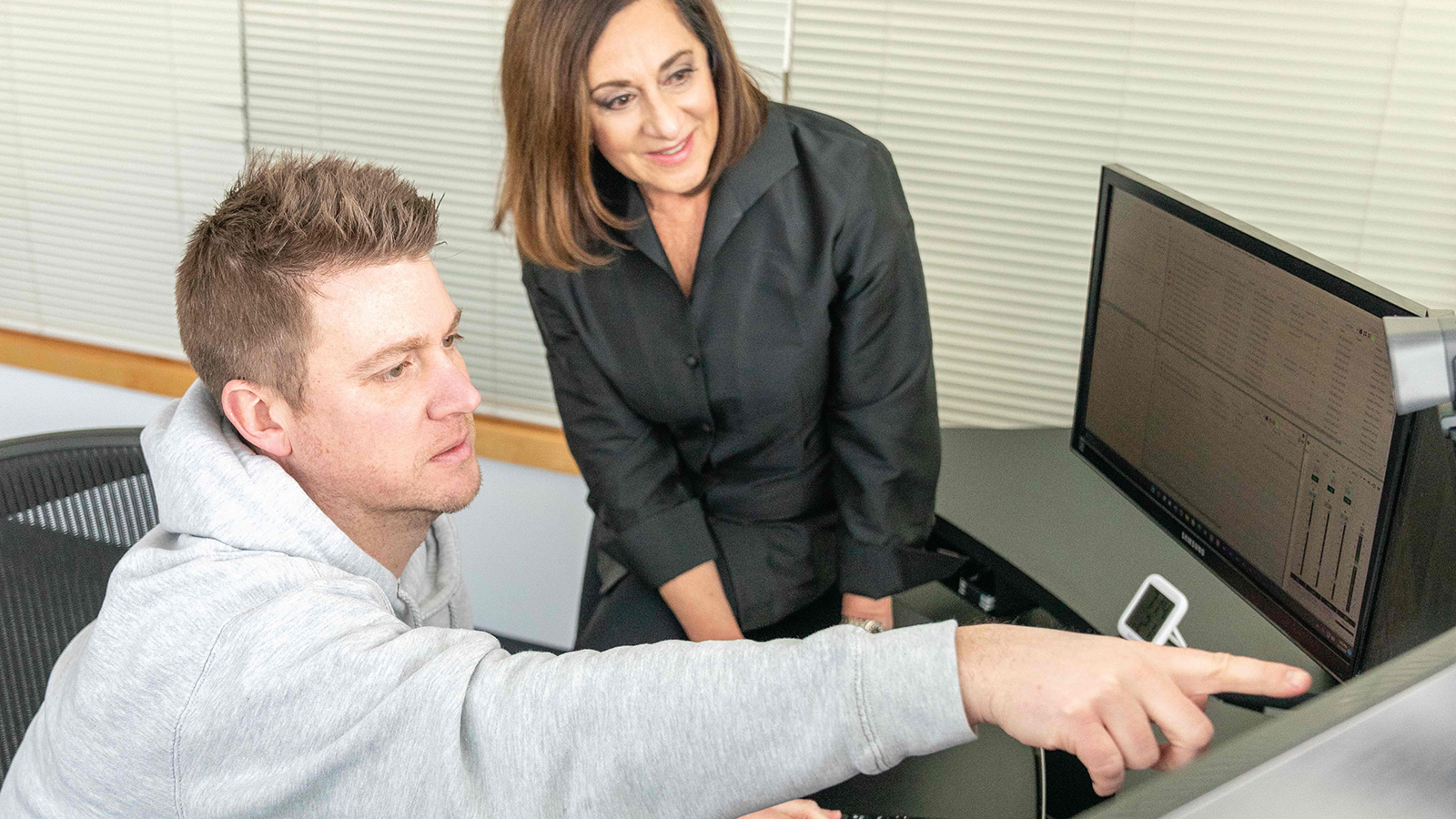
What’s Missing? The Importance of Non-Verbal Communication.
Communicating for many was tough before COVID and now it’s even harder. Jump on a call and often people choose not to start their video. Why? Maybe they are having a bad hair day. Maybe they are sharing their “office” with children or pets. They might be doing something else and don’t want you to know you do not have their undivided attention. No matter the reason, something important is missing. Non-verbal communication.
What is non-verbal communication?
Non-verbal communication involves conveying information or expressing oneself without the use of words. These non-verbal cues often play a significant role in interpersonal communication, complementing and sometimes contradicting the verbal message being conveyed. They can convey emotions, attitudes, intentions, and nuances of a conversation, significantly impacting how a message is received and understood.
When it comes to the importance of non-verbal communication in business most people think about eye-contact, facial expression, posture and gestures. These are exaggerated when you are in the “box” of a virtual meeting. And, depending upon how you use non-verbal communication gestures they might not even be seen. To learn more about that check out my tips for remote meetings.
What are the different types of non-verbal communication?
Non-verbal communication can be categorized into several types, each conveying messages through different channels:
- Body Language: This includes gestures, postures, facial expressions, and body movements. For instance, crossed arms might indicate defensiveness, while leaning in can signal interest or engagement. Don’t get too hung up on this. Crossed arms might just be a comfortable position for the person. Also pay attention to facial expression in combination with body language.
- Facial Expressions: Expressions such as smiles, frowns, raised eyebrows, and eye movements can convey emotions and attitudes.
- Gestures: Hand movements, head nods, and other body gestures can reinforce or emphasize verbal communication or convey messages on their own.
- Eye Contact: The amount and quality of eye contact can convey interest, attentiveness, or even dominance in a conversation.
- Tone of Voice: The tone, pitch, volume, and intonation in which words are spoken can add meaning and context to verbal communication.
- Posture and Body Orientation: How one stands or sits and the direction they face can convey openness, confidence, or disinterest.
- Touch: Touching can convey various emotions or messages depending on the context, culture, and relationship between individuals.
- Space and Proximity: Proxemics, or the use of personal space, can convey intimacy, power dynamics, or comfort levels between individuals.
- Appearance: Clothing, grooming, accessories, and overall appearance can communicate social status, personality, or cultural affiliations.
- Silence: Pauses and the absence of verbal communication also carry meaning and can be used deliberately to convey thoughts or emotions.
But non-verbal communication goes far beyond these things. Think about what physical distance used to say about our relationships. It used to be that most preferred about 18 inches of space around their physical person. If people got too close, it was uncomfortable. If they stayed too far away, we thought they did not like us or were avoiding contact.
Now, we have the 6-foot rule for in-person communication and the virtual world puts a lot more space between us. This virtual distance can and does impact our ability to communicate and do business, so you really do have to get eye contact and expression right.
What you wear and your appearance has always been an important non-verbal. I believe that, absent so many other clues, this becomes even more critical. In the current situation, being too formal might make you seem out of touch and not approachable. Too casual (no one wants to see you in sweats) and it might say you don’t care. Think about what you are trying to project because you might be sending the wrong message without even knowing it.
How much of communication is non-verbal?
Non-verbal communication is a substantial part of overall communication, often considered to be just as important, if not more so, than verbal communication. Some studies suggest that non-verbal communication may account for up to 70-93% of the total message that people convey, while others argue it’s around 60-65%.
The exact percentage can vary depending on the context, the culture, and the specific elements being considered. However, what remains clear is that non-verbal cues play a significant role in conveying emotions, attitudes, intentions, and nuances that often complement, reinforce, or sometimes contradict the verbal message.
In many cases, non-verbal communication can carry more weight than verbal communication. For example, a person might say they are feeling fine, but their tone of voice, facial expressions, or body language might suggest otherwise. This discrepancy often leads individuals to rely on non-verbal cues to interpret the true meaning behind a message.
What are the most common issues with non-verbal communication?
Several issues can arise in nonverbal communication, impacting the effectiveness and clarity of the message being conveyed:
- Misinterpretation: Nonverbal cues can be ambiguous and easily misunderstood. Different cultures, contexts, or individuals might interpret gestures, facial expressions, or body language differently, leading to misinterpretation.
- Incongruence: Sometimes, verbal and nonverbal messages conflict, causing confusion. For instance, someone might say they’re happy while displaying a frown, creating mixed signals.
- Cultural Differences: Gestures, facial expressions, and body language can vary significantly across cultures. What’s acceptable or positive in one culture might be offensive or inappropriate in another, leading to misunderstandings. If working cross-culturally you want to do some research to understand the signals you are sending.
- Overreliance: Relying solely on nonverbal communication can be problematic. Not everyone is adept at reading nonverbal cues, leading to missed messages or miscommunication.
- Individual Differences: People have different nonverbal communication styles. Some individuals might be more expressive with their body language or facial expressions, while others might be more reserved, leading to potential misinterpretations based on these differences.
- Lack of Awareness: People might not be conscious of their own nonverbal cues or the impact they have on others. This lack of awareness can lead to unintended communication barriers.
- Environmental Factors: Noise, distractions, or physical barriers can interfere with nonverbal communication, making it difficult for messages to be accurately conveyed or received.
Addressing these problems often involves awareness, sensitivity to cultural differences, active listening, and clarifying messages when there’s potential for misunderstanding due to incongruence between verbal and nonverbal cues.
Can non-verbal communication be learned and improved?
Yes, non-verbal communication can be learned and improved. While some aspects of non-verbal communication may be innate, individuals can develop and refine their non-verbal communication skills through conscious effort and practice. Here are some ways to enhance non-verbal communication:
- Self-awareness: Start by becoming aware of your own non-verbal cues. Pay attention to your facial expressions, body language, gestures, and posture in different situations. This self-awareness is the first step toward improvement. If you have you ever had someone ask you “Are you OK?” and you are surprised by the question- that is a sign that your non-verbal communication does not align with what you are feeling or saying.
- Observation: Observe others’ non-verbal cues. Pay attention to how people express emotions, convey messages through body language, and use gestures. This observation can provide valuable insights into the nuances of non-verbal communication. This is not to say you should copy others behavior- just study it.
- Active Listening: Effective non-verbal communication involves active listening. Show engagement through eye contact, nodding, and other cues that indicate you are actively processing and responding to the speaker.
- Practice Empathy: Try to understand the emotions and perspectives of others by reading their non-verbal cues. Empathy allows you to connect with others on a deeper level and respond appropriately.
- Adaptability: Be adaptable in your non-verbal communication based on the context and cultural norms. Different situations may require different non-verbal cues, and being flexible can enhance your overall communication effectiveness.
Peter Drucker said, “The most important thing in communication is hearing what isn’t said.”
That’s what non-verbal signals are…the things you don’t say but that speak volumes. If you understand the importance of non-verbal communication in virtual meetings and within the new rules of a COVID world you can use it to your advantage. Or you can fail to adapt and let it keep you from being a great communicator.
Think about it.
Cynthia Kay founded Cynthia Kay and Company media production 35 years ago. The company produces communications for organizations from Fortune Global 100 to small businesses. A graduate of Michigan State University, Kay holds a master’s in communications from Western Michigan University.
She is the Past Board Chair of the Small Business Association of Michigan (SBAM) and the National Small Business Association (NSBA). Cynthia has been honored with many awards including numerous Tellys and Woman Owned Small Business Supplier of the Year from Siemens in 2018. She has been named One of West Michigan’s 50 Most Influential Women 5 times. She is also the recipient of over 30 broadcast awards from UPI, AP and other news organizations.



